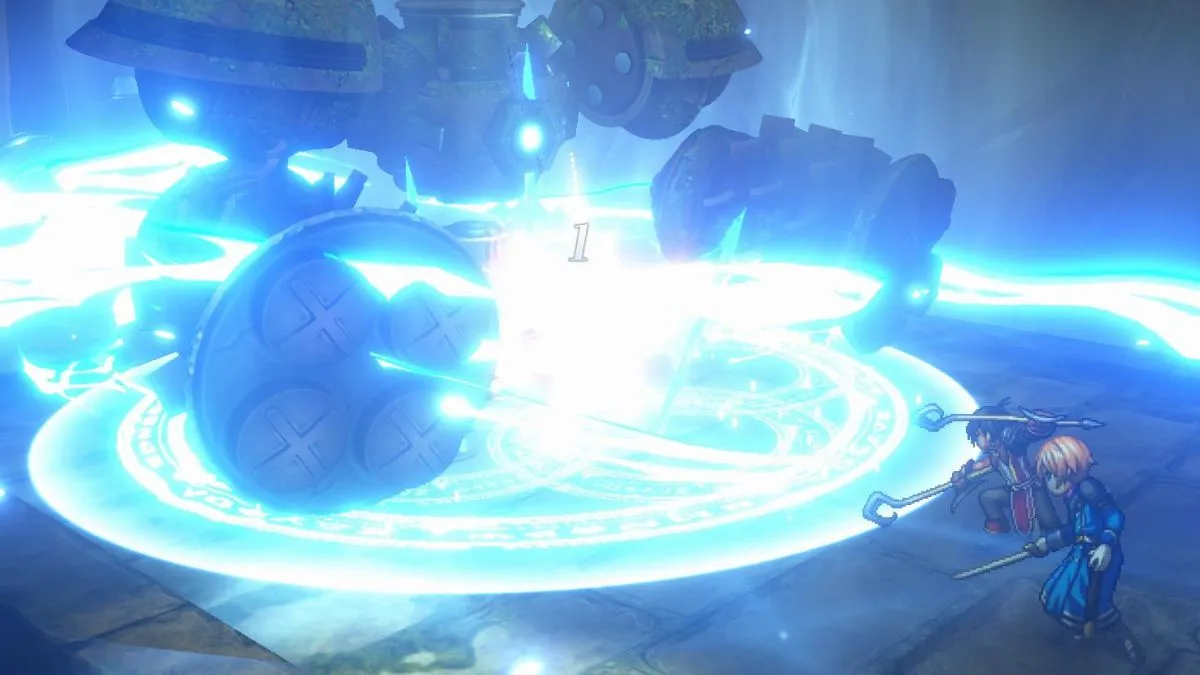Developed by Ubisoft Massive. Published by Ubisoft. Released on March 8, 2016. Available on PlayStation 4, Xbox One, and PC. Review code provided by publisher.
Tom Clancy’s The Division is a third person shooter/RPG hybrid with an experience that is transformative depending on whether you’re playing solo or with a group of two or more friends. As a solo player, the game is a dull slog with repetitive cover based gunplay, limited character progression mechanics and combat that is marred with bullet spongey enemies.

But a funny thing happens once you add even just one more player into the mix. The gameplay that was previously dull and uninspired now takes on a much more tactical feel; one that is actually in line with a game bearing the Tom Clancy name. Enemies that would typically take an eternity to take down can now be outflanked and focused upon, skills that would be absolutely useless in a solo setting now provide outstanding utility for the team, and gunfights that would otherwise feel like boring wars of attrition are now… well, they’re fun. It’s a game that is laser focused on a specific demographic of gamers, and if you fall within those crosshairs, you’re going to have a great time. Everyone else, not so much.
Regardless of whether you’re playing with or without friends, the story remains the same. The game takes place in a post apocalyptic New York City that has been ravaged not by zombies, aliens, or nuclear fallout, but by smallpox. A weaponized and more deadly version of the virus has been spread throughout the population through tainted dollar bills on Black Friday, eventually resulting in total chaos and anarchy in the streets.
Players take control of a member of The Division, a sleeper cell of highly trained agents put in place by our government to restore order once a catastrophe causes society to break down.
It’s a solid premise, and one that feels refreshingly grounded in reality. Unfortunately, storytelling in The Division is an afterthought. The few cutscenes that exist take place almost entirely in the base of operations and mostly just consist of characters telling you where to go, who to shoot, who to rescue, and what to take from the scene. There’s no character development, no banter, and nothing about any of the characters that makes them particularly likable or relatable. They’re primarily just voices in your ear that you have to listen to in order to progress.
The meat of The Division‘s story is told through pieces of intel that are obtained after completing main story missions, which are broken up into medical, security, and technology missions. Completing a medical mission will net you a virus report that sheds some light on the virus’s origins and the motive behind its release; completing a security mission shows you found footage of one of the various factions vying for control of the city; and completing a technology mission will unlock a piece of surveillance data that illuminates what happened to the first wave of Division agents.
The system is actually very intelligently balanced when playing in a squad.
While the surveillance camera videos tell a coherent and interconnected story that explain some of the mysteries in The Division‘s narrative, the rest of the intel files are so short and so rarely contain any pertinent information, that they hardly feel like a worthwhile reward for completing a mission. Rather than seeing footage of Cleaners and Rioters just murdering people, it would’ve been nice to get a little more background as to how these factions were formed and organized.
One of the very first tasks for players in The Division is to set up their Base of Operations, which serves as a home base where they can shop, craft, and upgrade their character. Like the story missions, the base is divided up into three wings: Medical, Security, and Technology. Completing missions and encounters of a specific type will reward the player with supplies that can be used at the corresponding wing to purchase an upgrade.
Each wing has a total of 10 upgrades, with each upgrade containing a collection of skills, talents, or passive perks. Skills are most likely going to be the main draw of any particular upgrade that includes them, as they are special abilities designed to give the player an edge in combat. There are nine normal skills in total — three for each wing — and each skill has three unlockable mods that add on an extra effect to the base skill. Eventually you’ll be able to unlock signature skills, which grant an extremely powerful buff or ability, but are on a significantly longer cooldown.
This method of acquiring skills is unique in that it isn’t tied to your level, and any of the nine standard skills can be obtained at anytime, as long as you have the supplies to afford them. This offers a great deal of customization early on, but it also has some substantial drawbacks.
For one, it causes level ups to feel completely meaningless. Leveling up in an RPG is supposed to feel like an exciting event where you learn new abilities that can potentially change the way you approach combat, but with no aspect of character progression tied to your character’s level, leveling up in The Division feels like an empty achievement.
In addition, the skills themselves are just not that exciting. If there were classes in The Division, each of the nine standard skills feel like they would be a level one spell for a specific class. First aid is just an extra health pack that’s on a timer, the sticky bomb is basically just another grenade that’s on a timer, smart cover just lets you put buffs on a piece of cover, and pulse just highlights enemies for all players to see. Once you’re 15+ hours in and still purchasing what feel like level one skills, it takes a lot of the excitement and motivation out of gaining supplies.
That being said, as weak as the skills are for the solo player, the system is actually very intelligently balanced when playing in a squad. Alone, none of the skills really pack a significant or satisfying punch, but when used in conjunction with each other, each skill is able to provide a useful bit of utility that goes a long way when it comes to taking down a tough boss and his army of bullet spongey elites. Having a dedicated healer removes the need to always have first aid mapped to one of your two skill slots, pulse becomes more valuable when its effect is applied to all squadmates, and smart cover actually becomes worthwhile when your whole squad can enjoy the benefits of the buffs applied to a piece of cover, rather than just you.
Along with skills, you’ll also gain talents and perks whenever you purchase an upgrade. Talents are small stat boosts that can be equipped in order to further specialize in a particular role, while perks are permanent passive bonuses that either affect you, or add a new feature in your Base of Operations, like a box that provides a random item every 12 hours.

Completing main story missions will net you the largest gains in supplies for upgrades, but you can also farm them by completing various encounters out in the city. Encounters are your garden variety mini side activities that all essentially boil down to “kill everyone at this location,” but in varying contexts. Sometimes you’ll kill everyone to stop a drug deal, sometimes you’ll kill everyone and then open a door to rescue hostages, and sometimes you’ll kill everyone because an area simply needs to be cleared of bad people. Unless you’re dead set on collecting all of the upgrades, encounters are mostly a waste of time and completely ignorable.
Side missions are a step above encounters, but it’s a very small step. Most side missions are also copied and pasted activities that just have you going to an area and killing a bunch of dudes for reasons justified by random people over the radio that you just met. Every now and then though, you’ll get a side mission that actually tells a story about a missing person told through echo devices, which are static holograms that show an event from the past. It’s a shame there aren’t more of these types of side missions because they would’ve gone a long way in bringing life to The Division‘s otherwise dead world.
Unlike encounters, side missions are almost impossible to ignore due to how many experience points they offer as a reward, making them feel less like optional side missions and more like obligations that must be fulfilled in order to reach the recommended level for the next story mission. The Division feels extremely padded as a result.
On a mechanical level, The Division at least plays well. There’s a solid cover system in place, a fantastic UI that presents all of the information that the player needs to know in a very clean way that doesn’t clutter up the screen, and the guns all have a great feel and satisfying kick. Enemy AI feels primitive, but serviceable. Enemies with shotguns or shields will rush forward without a care in the world, snipers will hang back and try to escape to safer cover if you attempt to get close, and enemies with flamethrowers will try to flank and scorch you from the sides.
The problem is that enemies take so much damage before they can be put down that it frequently turns firefights into an exhausting chore, especially when you have to deal with snipers that take three full magazines of headshots to put down, while they can effectively take you out with one shot if you poke your head out for two seconds without max health. Again, in cooperative play, it’s not that bad since allies can be revived, your squad has access to more skills, and enemies can be focused upon, but as a solo player, fighting through many portions of The Division straight up isn’t fun.
The most interesting aspect of The Division is the inclusion of what’s known as the Dark Zone.
There is matchmaking available for players who are willing to join a random squad, but too often I was put into a squad that either didn’t communicate at all, or just wasn’t interested in working together, which then just makes the enemies stronger without the advantage of coordination.
The most interesting aspect of The Division is the inclusion of what’s known as the Dark Zone. The Dark Zone is a walled off portion of the city where the virus hit the hardest and has been left all but abandoned by those on the outside. It’s here that players will find the best loot and many of the hardest enemies. However, all loot obtained in the Dark Zone is contaminated, and must be airlifted out before a player can claim ownership to it, meaning a player must call for an extraction, hold their position, and survive until the chopper arrives. Dying will cause you to drop all of your loot for anyone to pick up.
In addition to fending off AI controlled enemies, players must also be concerned about the motives of other human players inside the Dark Zone. At any point, a player can become a rogue agent by firing upon another human player. Doing so will put a pretty little red skull next to your name so all can see that you’re a hostile player and attempt to take you down to collect a bounty. The more you fire upon other agents, the longer that skull will stick around, and the more Dark Zone specific resources and experience you stand to lose if you die. If you manage to survive long enough for the bounty to disappear, you’ll be rewarded an extra sum of Dark Zone credits in addition to whatever loot you picked up from your victims.
That’s how it is all supposed to work on paper: A lawless zone where players make uneasy alliances with each other that can be broken at any time once greed starts to kick in. The reality though is that the risk vs reward mechanic that’s at the core of the Dark Zone experience is off balance. It’s simply too risky to go rogue at the moment when the rewards for going rogue are so meager, while the consequences for getting killed as a rogue are so punishing. The result is a Dark Zone that is much more passive than it was envisioned to be. Chances are that patches will eventually correct this imbalance, but for now the Dark Zone isn’t quite the exciting and innovative PvEvP battleground that players might have expected.

As far as end game is concerned, the Dark Zone is The Division‘s main attraction for players who have reached the level 30 cap and completed all of the story missions. There are also daily missions that encourage players to replay story missions on harder difficulties for daily rewards, a “Challenging” difficulty that is recommended only for squads of four, and a new type of currency called Phoenix Credits that are used to unlock the highest end gear. Finally, an upcoming free update in April will add the first Incursion mission called “Falcon Lost,” which will add The Division‘s take on high level raids.
Ubisoft is obviously counting on The Division to keep players hooked long term, but whether the game actually has the legs to last that long remains to be seen. Without a dedicated mode for PvP and no Incursions at the moment, players at the level cap are kind of left to wonder “What should I do now?” Hopefully in the future, Massive will add some sort of mode similar to the Iron Banner from Destiny to give players another reason to stick around, and more importantly, another way to make use of the high level loot that they’re spending so much time trying to get.
That being said, one can hardly say that The Division is light on content, with at least 30 hours of playtime just to get through the main story alone. If you’ve got friends to regularly group up with you, or you don’t mind rolling the dice and jumping into games with a random squad, there’s a lot to like about The Division’s more tactical approach to the cooperative shooter/RPG genre. If you’re looking to jump in as a solo player and don’t intend on grouping up with other people, prepare for a world of frustration and tedium.
Bottom Line: Tom Clancy’s The Division is a game that demands to be played with other people. It’s biggest gameplay flaws are forgivable once you add a friend into the mix, but as a solo experience it can be an exhausting grind with little in the way of rewards or satisfaction.
Recommendation: Fans of shooters with RPG elements like Borderlands and Destiny will no doubt want to give The Division a look, but make sure you’ve got some buddies to come along with you for the ride.
[rating=3.5]


